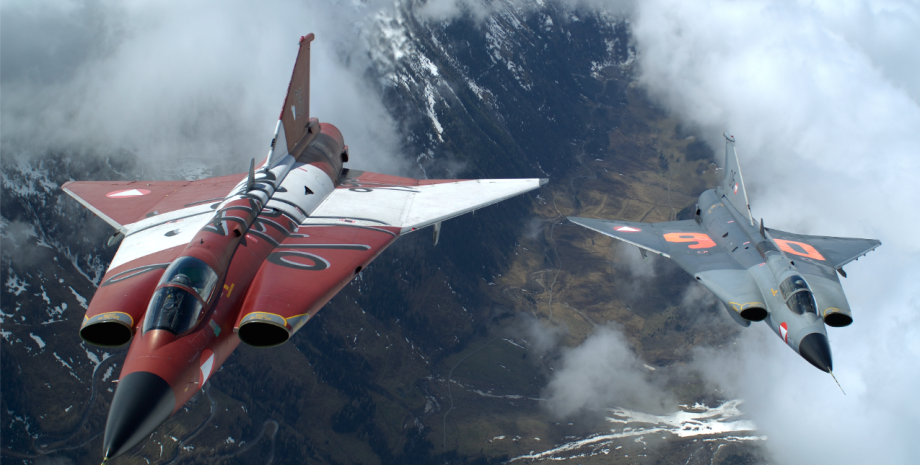
It is presented as the first Western European aircraft with supersonic capabilities, Draken also became the first representative of a double delta wing configuration and the first to perform Kobra's maneuver. Focus translated Maya Carlin's article about the Swedish fighter SAAB 35 Draken, which was created for hostilities against the USSR.
Developed in the light of the unique requirements of the Swedish BAS-60 Swedish System, it could fly from makeshift runways and was optimized for intercepting the fastest aircraft, developing speeds of up to 2. 0 Mach. Armed with Sidewinder rockets, rockets and bombs, Draken could have a 2. 9 tons load.
Despite the fact that this aircraft was not destined to participate in the fighting, 651 units were made by 2009, which performed various functions, including training, and became a significant exhibit in the history of military aviation. Saab 35 is one of many fighters created during the Cold War to combat the USSR's increasing aggression against the West. When Sweden first showed his Draken fighter, he immediately broke up many records.
It became the first Western European aircraft with supersonic characteristics and the first to overcome the sound barrier. Draken also became the first in the history of a battle aircraft with a wing type "Double Triangle" and the first plane to perform the cobra maneuver. Therefore, despite the fact that SAAB 35 can already be considered an outdated relic, it deserves respect both by aviation lovers and by military experts.
After the Second World War, the Swedish authorities realized the need to create a supersonic fighter, capable of leading dogfights and intercepting bombers at high altitudes. To begin with, the Swedish Department of Defense Opportunities formulated specific requirements for the platform. It was assumed that the new bomber would fly at speeds exceeding 1. 3-1. 5 mach (twice the speed of sound), but then this rating was increased to 1. 7-1. 8 mac Makhiv.
Perhaps the most important thing was that Swedish engineers wanted to get an aircraft capable of flying from the unique BAS-60 Aviation Base system. This system was the creation of 70 small air bases throughout Sweden to operate fighters from public roads in the event of a possible Soviet attack. Such "wartime databases" required unconventional runways, so the new platform had to be able to act in harsh conditions.
Draken was optimized for high -speed flights and could develop a maximum speed of 2. 0 strokes, which could not be achieved by any of the Western European aircraft of the time. As for weapons, the platform housed up to four missiles "Air-Air-Air" AIM-9 Sidewinder. Also on Saab 35 Draken you could place many rockets and bombs. In total, the Swedish aircraft could carry almost 2. 9 tons of amounts. Draken gap was relatively unstable due to the delta and the absence of tail.
In order to better teach pilots to avoid wrapping during flight, the infamous cobra maneuver was invented. As detailed in The Aviationist magazine, "when performing a" Cobra "the aircraft suddenly lifts the nose to a vertical position (or above), and then lowers it back into the usual flight plane, maintaining more or less the same height throughout the maneuver. " In the Top Ghan's blockbuster, the hero Tom Cruza has repeatedly used the Cobra to take an attack on the enemy aircraft.
"Just click the brake and they will fly by," says Meverik in the famous stage. Over the years of its existence, SAAB has produced 651 Draken in total, the last of which came off the conveyor in the early 2000s. Until 2009, the United States used a dozen of the former Danish Saab 35 as training planes. Austria also flew on the Drans, equipped with internal machine guns instead of the air-air missiles.
Although the Swedish platform has never participated in real hostilities (like most military systems created by Stockholm), it was in one way or another a terrible planery. Maya Carlin is the author of national security articles for The National Interest, the analytics of the Security Policy Center and a former Anna Sobol-Levi researcher at IDC Duchy in Israel. Her articles are published in many publications, including the National Interest, the Jerusalem Post and Times of Israel.










All rights reserved IN-Ukraine.info - 2022